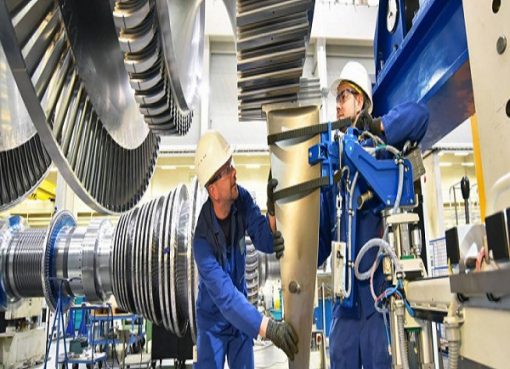On the 9th, the first of three spacecraft will arrive at the Red Planet and inaugurate a new era of Martian exploration.
ON FEBRUARY 9, the United Arab Emirates’ Hope spacecraft is expected to enter orbit around Mars after a six-month, 300-million-mile journey from Earth. It will mark the beginning of a historic month for the Red Planet, which will see three separate national missions enter orbit or touch down on the surface. Two of the countries behind these missions, the UAE and China, will be visiting Mars for the first time; they will become the fifth and sixth countries to pull off that feat, respectively. The third mission, launched by NASA, is expected to become the United States’ 15th mission to successfully orbit or land on Mars.
The UAE is the only country that will not attempt a soft landing during the February Mars invasion. Instead, its Hope orbiter will study the Martian atmosphere from more than 12,000 miles above the surface. Planetary scientists hope that the UAE’s robo-meteorologist will fill in gaps in our understanding of the Martian climate and help validate environmental data captured by rovers and landers on the ground. For the country’s first foray into deep-space exploration, the UAE space agency worked with an international team of researchers at the University of Colorado, Boulder, to help plan the mission and build the spacecraft.
“There’s really no point in exploring outer space without adding to knowledge, and we’ve never run a science mission,” Sarah bint Yousef Al Amiri, the UAE minister of state for advanced sciences and science lead for the Emirates Mars Mission, said during a press conference last week. “It wasn’t an easy journey, but it was such an enjoyment to rethink how you develop a planetary exploration mission.”
The Hope spacecraft will be the first new orbiter around Mars since the European Space Agency’s ExoMars spacecraft arrived in 2016, but it won’t be the newcomer for long. China’s Tianwen-1 mission—which is a lander, rover, and orbiter rolled up into one—is expected to arrive less than a day later. China’s space agency has been quiet about its plans for visiting the Red Planet, but the craft is expected to attempt a landing shortly after it achieves orbit.
Unlike NASA’s car-sized Mars rovers Curiosity and Opportunity, China’s Tianwen-1 rover is small enough to stow away inside the stationary lander that will carry it to the surface. Once it has safely touched down, the six-wheeled rover will detach itself from the lander and spend the next three months exploring its landing site, Utopia Planitia, the planet’s largest impact crater. The rover and lander will both relay data from the surface to the Tianwen-1 orbiter, which will send it back to Earth. Although the Chinese National Space Administration hasn’t provided a lot of details about the exact scientific goals of its mission, a paper about it published last year in Nature Astronomy says the agency’s goal is to “perform a global and extensive survey of the entire planet.”
On February 18, a little more than a week after this robotic delegation arrives, NASA’s Perseverance rover is expected to touch down. This will involve a harrowing descent to the surface, during which the rover must reduce its speed from more than 10,000 miles an hour to just a few feet per second over the course of 15 minutes. The descent will end with some aerial acrobatics, during which a rocket-powered sky crane will gently deposit the rover on the surface while hovering a few dozen feet above the ground.
“Don’t let anybody tell you different—landing on Mars is hard to do,” John McNamee, project manager for the Perseverance mission at NASA’s Jet Propulsion Laboratory, said in a statement. “But the women and men on this team are the best in the world at what they do. When our spacecraft hits the top of the Mars atmosphere at about three and a half miles per second, we’ll be ready.”
Perseverance is essentially a nuclear-powered self-driving car, and its primary mission is to collect samples that will be picked up by another spacecraft later this decade and returned to Earth. With any luck, this red dust will contain evidence that Mars once hosted microbial life. But whether scientists will recognize extraterrestrial life when they see it remains an open question. Aside from hunting for aliens, Perseverance will also enable a first-of-its-kind technology demonstration involving a small helicopter called Ingenuity. A few days after landing, Perseverance will jettison the helicopter in a clearing where it will attempt several short flights. If it works, it will be the first time an aircraft has flown on another planet.
The arrival of three national missions on Mars within two weeks of one another is a historic moment in the history of space exploration. It underscores the rapid development of space capabilities around the world and the true internationalization of planetary exploration. Mars was once the exclusive stomping grounds of the United States and the Soviet Union, but it is now also an accessible destination for the European Union, Japan, India, the UAE, and China. Getting to Mars is still a major challenge—historically only 40 percent of Mars missions have been successful—and there’s no guarantee that all three missions will succeed in their objectives. But launching a trio of spacecraft to our closest planetary neighbor is a major achievement and bodes well for the future of space exploration.
Source: wired (Daniel Oberhaus)










